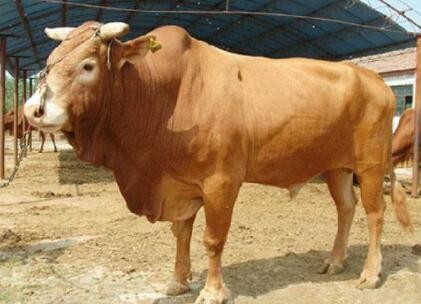
News briefing:

News briefing:
Cattle flatulence, also known as cattle acute rumen bloating, is also known as rumen inflation. It often occurs in cattle. This disease mostly occurs in summer and autumn. It is especially common to feed dairy cows in farm houses.
Generally divided into primary and secondary.
1. Primary: It is generally related to feeding green-green forage that is easy to ferment, or feeding mildew, rain, frost, sudden change of forage or feed, and feeding methods can cause it.
2. Secondary: Rumen bloating is generally secondary to some digestive diseases such as esophagus obstruction, traumatic reticulitis, valve obstruction, abomasum edema and other diseases.
The causes of cow flatulence are:
1. The animal body is insufficient to decompose endogenous enzymes such as crude fiber, protein, and starch;
2. Consume excessive crude fiber forage with low digestibility, or feed that contains a lot of non-starch polysaccharides;
3. Stimulated by a foreign mutation environment, or occurrence of certain metabolic diseases;
Cow flatulence symptoms:
The abdomen is swollen, especially the left crotch. In severe cases, it may be higher than the back. The rumen is tense and elastic when percussing, and it shows a hesitation. Sick cows often turn around and kick their abdomen with their hind limbs, and their heartbeat increases, reaching more than 100 beats per minute. There is foamy saliva in the mouth, breathing can reach 60-80 times per minute. The body temperature does not change much, but occasionally fever occurs. Diarrhea or no stool. When there is stool, the stool smells bad and contains undigested feed. It does not ruminate, eat grass, or eat food. Terminally sick cows have dyskinesias, stand unsteady or fall to the ground and refuse to rise, groaning and moaning constantly, and eventually die due to severe breathing difficulties or heart palsy. The severely ill cows develop rapidly and can die within 1-2 hours. Even after the rumen qi in some cattle gets better, they will still relapse, and the course of the disease is often as long as 7 days or half a month.
The treatment method of bull ruminal flatulence:
One: Severe bloating or use a gastric tube into the rumen to exhaust gas at an acute moment. A trocar can also be used to puncture and deflate the left side fossa. After the air is exhausted, 400-500 ml of paraffin oil and 30 g of ichthyol can be injected into the rumen through the pinhole.
Two: Use surfactant drugs to reduce swelling, such as simethicone, or commercially available swelling tablets.
Three: Folk treatment of sheep rumen food accumulation (treatment of cattle flatulence)
1. One bottle of edible oil (vegetable oil is best) and one bottle of vinegar.
2. Use scented wooden sticks, such as chrysanthemum trees, locust trees, or spread the sauce residue on the sticks and hold them in the cow's mouth to increase the discharge of belching. (My old family uses pine needles from pine trees)
3. Take 250 grams of garlic, peel it, mash it, add 500 grams of vinegar and 100 grams of white wine.
4. Take celestial vine or green vine incense, 250 grams of snake ginseng, 150 grams of orange peel, 150 grams of Citrus aurantium, 10 grams of camphor root, decoct and irrigate.
5. Take 250 grams of Evodia ovata leaves or spicy cotyledons, wash and cut finely, decoct them, and irrigate them with water. (The above soil method is based on adult cattle as an example, calves should be reduced accordingly)
Five: Intravenous fluid rehydration, the principle of fluid rehydration is to remove the gas in the rumen, prevent fermentation, clean the gastrointestinal tract, and improve the internal environment of the rumen.
Six: No matter which method of treatment, the cattle should be allowed to exercise more to increase rumen peristalsis and accelerate the discharge of rumen contents.
Seven: For the secondary swelling, the pathogen should be found as soon as possible while dispelling the breath, and the pathogen should be treated as soon as possible.
Chili to treat cattle rumen flatulence
Chili, also known as scallop and spicy pepper, can increase appetite. The fruit has the functions of warming the middle and dispelling cold, strengthening the stomach and eliminating food. It is used for the treatment of stomach cold pain, flatulence, and indigestion; topical treatment of frostbite, rheumatism, lumbar muscle pain. Its root has the function of promoting blood circulation and reducing swelling, and can be used to treat chilblains externally. Studies have shown that the content of vitamin C in peppers ranks first in vegetables. Today, I have collected a small remedy for the treatment of rumen flatulence in cattle, and I will share it with you.
Method: 50 to 100 grams of crushed red pepper, 200 to 300 grams of soybean oil feet (sediment of soybean oil after long-term storage), mixed with 1000 ml of warm water, and administrated at once.
Tea can also cure flatulence
When cows eat too much grass to cause belly swelling, tea and saponins can be mashed together and stuffed into the cow’s anus to make the cows defecate quickly and eliminate belly swelling. You can also use 250 grams each of tea leaves and shelled radish seeds, fry them into a thick juice and take them together.
Date of opening:1970-01-01 Shop address: Main products: Store certification time:1970-01-01 08:00:00
Store Name: Principal: Contact number: email: